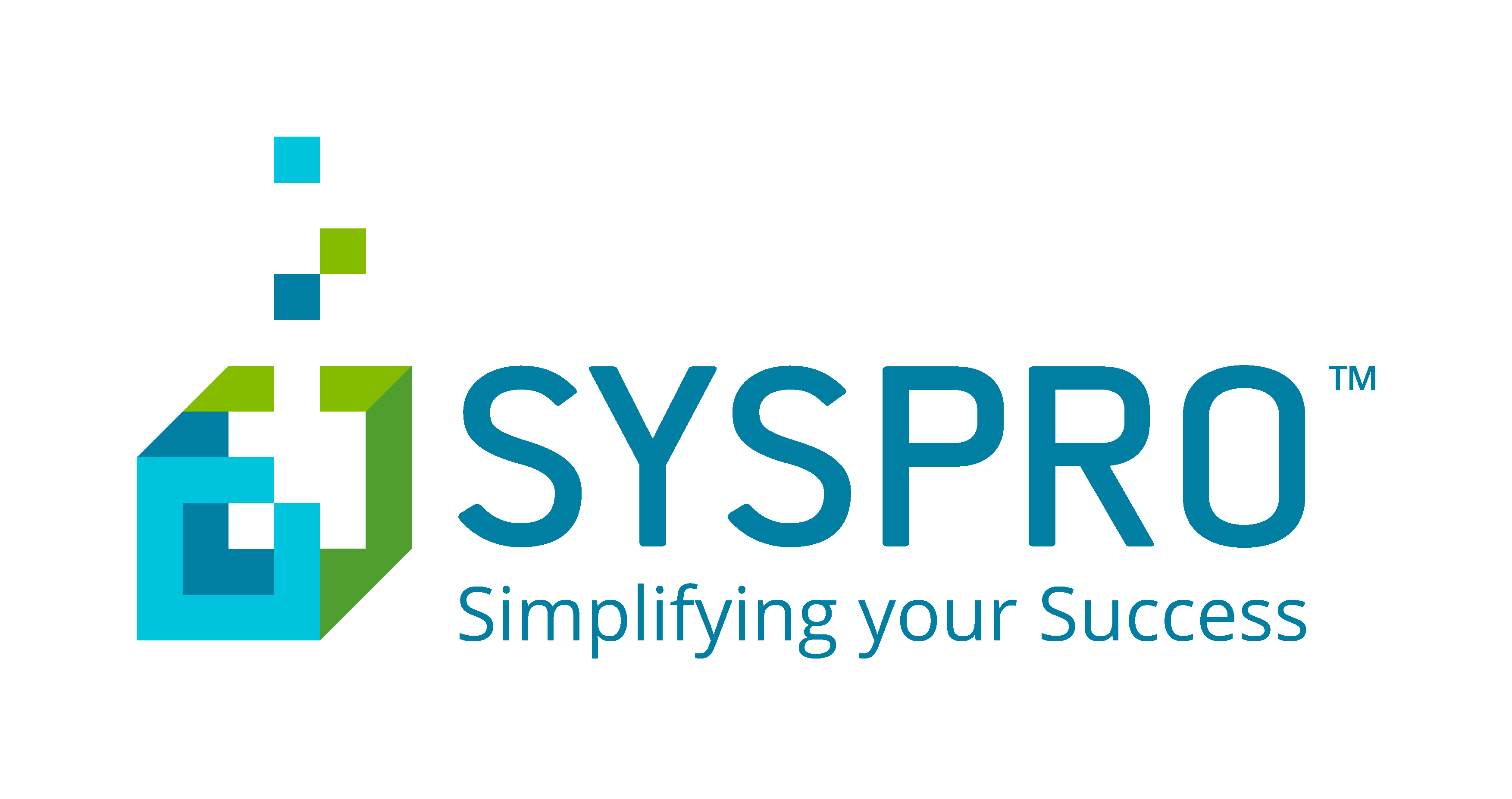News and Articles
Discover exciting news and insight at Bannockburn
Discover whats new and exciting at Bannockburn

Cybersecurity Trends to Watch in 2025: Staying Ahead of Emerging Threats
•January 8, 2025
Cybersecurity Trends to Watch in 2025: Staying Ahead of Emerging Threats
January 8, 2025
By: Ali Alsalkhadi
As we navigate 2025, the cybersecurity landscape continues to evolve, presenting businesses with increasingly complex challenges. Cybercriminals are adopting sophisticated tactics, leveraging emerging technologies to exploit vulnerabilities. Staying ahead of these threats requires a proactive approach, combining cutting-edge security tools with a culture of awareness and vigilance. At Bannockburn, we’re closely monitoring these developments and helping organizations strengthen their defenses. Here’s an overview of the key cybersecurity trends to watch this year.
The Rise of AI-Driven Cyber Attacks
Artificial intelligence has become a double-edged sword in cybersecurity. While AI-driven tools have enhanced threat detection and response, cybercriminals are now using AI to create adaptive malware and highly convincing phishing schemes. These attacks are not only more effective but also harder to detect using traditional methods.
To counter these threats, businesses must invest in AI-powered security solutions capable of identifying and neutralizing malicious activity in real-time. Additionally, comprehensive employee training remains critical, as human error often serves as the entry point for cyber attacks. Empowering teams to recognize and report suspicious activities can significantly reduce risks.
Securing the Internet of Things (IoT)
The proliferation of IoT devices—from smart appliances to industrial sensors—has expanded the attack surface for cybercriminals. Many IoT devices lack robust security features, making them attractive targets. A compromised IoT device can provide attackers with a gateway to an organization’s network, exposing sensitive data and critical systems.
To mitigate these risks, organizations must prioritize IoT security. This includes implementing strict device management protocols, ensuring firmware is updated promptly, and using network segmentation to isolate vulnerable devices. Regular audits of IoT environments can also help identify potential weaknesses before they can be exploited.
Ransomware Evolves with Double Extortion
Ransomware attacks remain one of the most devastating threats, with attackers increasingly targeting industries like healthcare, finance, and manufacturing. Double extortion tactics—where attackers not only encrypt data but also threaten to leak it—are becoming more common, amplifying the stakes for affected organizations.
To defend against ransomware, businesses must adopt a proactive stance. Encrypting sensitive data, maintaining regular backups, and preparing comprehensive incident response plans are essential steps. Additionally, penetration testing and vulnerability assessments can help identify weak points, enabling organizations to address them before attackers do.
The Shift to Zero Trust Security
The transition to hybrid work environments has accelerated the adoption of Zero Trust architecture. Traditional perimeter-based security models are no longer sufficient as employees access systems from various locations and devices. Zero Trust emphasizes continuous authentication and strict access controls, ensuring that no user or device is trusted by default.
Organizations should implement multi-factor authentication (MFA), robust endpoint monitoring, and identity verification protocols to enhance their security posture. By adopting a Zero Trust approach, businesses can reduce the risk of unauthorized access and better protect their critical assets.
Combatting Supply Chain Attacks
Supply chain attacks are emerging as a major concern, with cybercriminals targeting third-party vendors and partners to infiltrate their ultimate targets. These attacks highlight the importance of scrutinizing the security practices of all vendors and limiting their access to sensitive data.
Conducting thorough risk assessments, requiring compliance with stringent security standards, and implementing contractual obligations for cybersecurity can help mitigate the risks associated with supply chain vulnerabilities. Collaboration and transparency between organizations and their vendors are key to building a resilient supply chain.
Building a Culture of Cybersecurity
While technological investments are critical, fostering a culture of cybersecurity awareness is equally important. Regular training sessions, clear communication of security policies, and encouraging a proactive mindset can empower employees to become the first line of defense against cyber threats.
Bannockburn’s Approach to Cybersecurity
At Bannockburn, we understand the complexities of today’s cybersecurity challenges. Our team works closely with organizations to design and implement tailored security strategies, leveraging the latest technologies and best practices.

Bannockburn Welcomes Two New Developers: Ali Alsalkhadi and Lamina Zaman
•January 6, 2025
Bannockburn Welcomes Two New Developers: Ali Alsalkhadi and Lamina Zaman
January 6, 2025
By: Whit Thiele
We’re excited to welcome two talented developers, Ali Alsalkhadi and Lamina Zaman, to the Bannockburn team. Their skills, passion, and fresh perspectives will be instrumental as we continue to deliver exceptional software solutions to our clients.
Meet the New Team Members
Ali Alsalkhadi
Ali is a skilled full-stack developer with a strong track record of building scalable, end-to-end software applications. From crafting intuitive user interfaces to developing robust backend systems, Ali’s expertise spans the entire application lifecycle. He is particularly adept at identifying solutions that streamline processes and enhance user experience.
Ali’s thoughtful approach to problem-solving and commitment to quality make him a valuable addition to the team.
Lamina Zaman
Lamina joins Bannockburn as a passionate developer with a growing interest in artificial intelligence. Her background includes experience in mobile development and frontend design, and she is particularly excited about integrating AI technologies to create smarter, more adaptive applications. Lamina’s enthusiasm for exploring innovative solutions and her dedication to continuous learning make her a natural fit for Bannockburn’s dynamic team.
Outside of work, Lamina enjoys diving into AI research, experimenting with new tools, and finding ways to leverage cutting-edge technologies to solve real-world problems. She is eager to bring her forward-thinking mindset and technical skills to Bannockburn’s diverse projects.
Looking Ahead
Ali and Lamina bring a fresh energy to Bannockburn at an exciting time for the company. Their diverse skill sets and dedication to excellence will support our ongoing efforts to deliver innovative, high-quality software solutions. We’re confident they’ll make a positive impact on our projects and help drive success for our clients.
We’re thrilled to have them on board and can’t wait to see their contributions as part of the Bannockburn team. If you’d like to learn more about our team or the work we do, get in touch.

Svelte 5: Features, Improvements, and Migration
•December 9, 2024
Svelte 5: Features, Improvements, and Migration
December 9, 2024
By: Whit Thiele
Svelte has always been a favorite among developers for its simplicity, performance, and ease of use. With the release of Svelte 5, the framework has taken a significant leap forward, introducing a host of features and improvements that make it an even more compelling choice for modern web development. At Bannockburn, we’ve been exploring what’s new in Svelte 5 and how it can help businesses deliver better web experiences. Here’s what you need to know.
Key Features and Improvements in Svelte 5
- Enhanced Reactivity Model: Svelte 5 introduces a revamped reactivity system that allows for more intuitive state management. With finer-grained reactivity, developers can now track changes at a more granular level, leading to better performance and cleaner code.
- Improved Server-Side Rendering (SSR): With a focus on speed and scalability, Svelte 5’s updated SSR capabilities make it easier to deliver lightning-fast pages. This is particularly valuable for SEO and user experience, ensuring that applications load quickly and perform well on all devices.
- First-Class TypeScript Support: TypeScript integration has been significantly improved in Svelte 5, providing a smoother developer experience. With built-in support for static typing, developers can catch errors earlier in the development process and write more maintainable code.
- Enhanced Tooling and Ecosystem: Svelte 5 comes with updated tools, including a new version of SvelteKit, the official framework for building full-stack applications with Svelte. The tooling improvements streamline workflows, making it easier to get started and scale applications.
- Focus on Accessibility: Accessibility has been a key focus in Svelte 5, with built-in features and guidelines to help developers create more inclusive web applications. This aligns with modern web standards and ensures that applications are usable by all audiences.
Top Challenges in Migrating to Svelte 5
- Breaking Changes: As with any major release, Svelte 5 introduces breaking changes that may require updates to existing codebases. Developers need to carefully review the migration guide to ensure a smooth transition.
- Learning Curve for New Features: The enhanced reactivity model and new APIs, while powerful, may require some adjustment. Teams will need to invest time in learning the updated features to fully leverage Svelte 5’s capabilities.
- Dependency Updates: Upgrading to Svelte 5 may also involve updating dependencies, such as SvelteKit or third-party libraries. This can lead to compatibility issues that need to be resolved during the migration process.
- Performance Tuning: While Svelte 5 offers better performance, developers need to revisit their existing optimizations to ensure they align with the new framework’s best practices.
Bannockburn’s Approach to Svelte 5
At Bannockburn, we understand the complexities of adopting new technologies. Our team is equipped to help businesses navigate the transition to Svelte 5, from evaluating its benefits for specific use cases to executing seamless migrations. By combining technical expertise with a focus on business outcomes, we ensure that our clients can harness the full potential of Svelte 5 with minimal disruption.

Navigating the Shift to Remote Work: Challenges and Opportunities
•November 12, 2024
Navigating the Shift to Remote Work: Challenges and Opportunities
November 12, 2024
By: Whit Thiele
Remote and hybrid work have become integral to modern business operations, requiring companies to adopt new strategies and tools to ensure success. Bannockburn has embraced this shift, building a flexible and innovative work culture that prioritizes collaboration, productivity, and employee well-being. Here, we share how we’ve successfully managed this transition and continue to thrive in a remote-first environment.
Managing the Shift to Remote Work
Adapting to a remote-first model requires careful planning and execution. Businesses must address challenges such as maintaining clear communication, fostering team cohesion, and ensuring consistent productivity. At Bannockburn, we proactively implemented strategies and tools to support a seamless transition, ensuring our team stays connected, supported, and aligned across different locations.
Key Strategies for Effective Remote Work
-
Seamless Collaboration: Collaboration is at the heart of our operations. To maintain efficiency and teamwork, Bannockburn utilizes:
- Project Management: Jira helps us manage workflows, track progress, and stay organized across multiple projects.
- Real-Time Communication: Microsoft Teams facilitates instant messaging, team collaboration, and seamless integrations.
- Video Conferencing: Zoom enables effective virtual meetings, from daily stand-ups to in-depth brainstorming sessions.
-
Supporting Employee Well-Being: We understand that remote work can blur the lines between personal and professional life. To support employee well-being, we:
- Encourage flexible work hours to accommodate individual needs and time zones.
- Host regular check-ins to support mental health and overall well-being.
- Organize virtual team-building activities to foster a sense of community and connection.
- Fostering Continuous Learning: Professional growth remains a priority in our remote model. Employees have access to online training platforms, participate in virtual workshops, and engage in knowledge-sharing initiatives to stay sharp and motivated.
Opportunities in Remote Work
Remote work presents unique opportunities for growth and innovation. At Bannockburn, we’ve leveraged this model to achieve:
- Access to Global Talent: By removing geographical barriers, we’ve built a team enriched with diverse perspectives and expertise from around the world.
- Enhanced Productivity: Flexible work arrangements empower employees to work in ways that suit them best, leading to improved focus and performance.
- Optimized Costs: Operating in a hybrid or remote-first model has reduced overheads while maintaining quality and efficiency.
Looking Ahead
As remote and hybrid work continue to evolve, Bannockburn remains committed to refining practices, exploring innovative solutions, and fostering a people-first culture. Our adaptability and focus on communication and employee empowerment ensure that we stay at the forefront of this modern way of working.

Bannockburn Becomes a SYSPRO Partner: Expanding ERP Services Across North America
•September 4, 2024
Bannockburn Becomes a SYSPRO Partner: Expanding ERP Services Across North America
September 4, 2024
By: Whit Thiele
Bannockburn is excited to announce that we have officially become a SYSPRO Partner, enhancing our ability to deliver comprehensive ERP solutions to clients across North America. With a rich history of working with ERP systems and extensive experience with SYSPRO, this partnership marks a significant milestone in our journey. Here’s a look at how our new status as a SYSPRO Partner will benefit our clients, with a particular focus on the automotive manufacturing and agriculture sectors.
Why SYSPRO?
SYSPRO is a global leader in ERP software solutions, renowned for its flexibility and scalability in addressing the needs of various industries. Our decision to partner with SYSPRO stems from our deep understanding of ERP systems and our proven track record in implementing these solutions successfully. This partnership allows us to leverage SYSPRO’s robust software to provide enhanced service offerings to our clients.
Our Experience and Synergy
At Bannockburn, we have extensive experience with ERP systems, including significant expertise in SYSPRO. Over the years, we have collaborated with SYSPRO on various projects, gaining valuable insights into their software and developing strong synergies with their team. This experience has equipped us with the knowledge and skills needed to effectively implement and support SYSPRO ERP solutions.
Focus on Key Industries
Our partnership with SYSPRO will enable us to provide tailored ERP solutions with a special focus on two key industries:
- Automotive Manufacturing: Located in Windsor, Ontario, one of the largest automotive manufacturing hubs in the world, Bannockburn is well-positioned to address the unique needs of automotive manufacturers. We understand the complexities of this industry and are committed to helping our clients optimize their operations with SYSPRO’s advanced ERP capabilities.
- Agriculture: With our strong presence in the agricultural sector, particularly in Leamington, Ontario—home to the second largest greenhouse cluster in the world—we are dedicated to supporting agriculture companies in streamlining their processes and improving efficiency through SYSPRO’s ERP solutions.
What This Means for Our Clients
Becoming a SYSPRO Partner means that Bannockburn can now offer a comprehensive range of services, including:
- Enhanced ERP Solutions: Access to SYSPRO’s full suite of ERP software, tailored to meet the specific needs of our clients in the automotive and agriculture sectors.
- Expert Implementation: Our team of experienced consultants will provide seamless implementation and integration of SYSPRO ERP systems, ensuring minimal disruption to your operations.
- Ongoing Support: As a SYSPRO Partner, we are committed to offering continued support and guidance to help you maximize the value of your ERP investment.
We are thrilled to embark on this new chapter with SYSPRO and look forward to delivering exceptional ERP solutions to our clients across North America. Whether you’re in automotive manufacturing or agriculture, Bannockburn is here to help you leverage the power of SYSPRO’s ERP software to achieve your business goals. For more information about our ERP services or to explore how we can assist your business, contact us today.

Case Study: Custom Ecommerce Website and CMS for an Agriculture Company
•August 28, 2024
Case Study: Custom Ecommerce Website and CMS for an Agriculture Company
August 28, 2024
By: Ethan Jeffery
In the heart of Leamington, Ontario—known for its vibrant agricultural industry—Bannockburn recently undertook an exciting project to create a custom ecommerce website and Content Management System (CMS) for a prominent agriculture company. The goal was to extend their existing ERP system and enhance their digital presence to better serve their customers and streamline their operations. Here’s how we approached the project and the successful outcomes we achieved.
The Challenge
Our client, a leading agriculture company based in Leamington, Ontario, required a robust ecommerce platform and CMS to integrate seamlessly with their existing ERP system. The company’s ERP system was integral to their operations, handling inventory management, order processing, and customer data. However, their online presence was outdated and lacked the functionality needed to support their growing business needs.
The primary challenges were:
- Integration Complexity: Ensuring the new ecommerce site and CMS worked harmoniously with the existing ERP system.
- Customization Requirements: Developing a platform tailored to the specific needs of the agriculture industry.
- User Experience: Creating an intuitive and user-friendly interface for both internal users and customers.
Our Approach
To address these challenges, we followed a structured approach:
- Needs Assessment and Planning: We began by conducting a thorough analysis of the client’s existing ERP system, understanding their business processes, and defining the requirements for the new ecommerce platform and CMS. This included identifying key features needed for integration and customization.
- Design and Development: Our team designed a custom ecommerce website that aligned with the company’s branding and industry requirements. The CMS was built to offer easy content management and integration capabilities with the ERP system. Key features included:
- Real-Time Data Syncing: Seamless integration with the ERP for real-time inventory updates, order processing, and customer information.
- Customizable Product Catalog: A flexible system for managing and displaying a wide range of agricultural products.
- User-Friendly Interface: An intuitive design for both backend users and customers, ensuring a smooth browsing and purchasing experience.
- Integration and Testing: We implemented the ecommerce site and CMS, focusing on integrating them with the ERP system. Extensive testing was conducted to ensure all functionalities worked as expected, including data syncing and user interactions.
- Training and Support: We provided training for the client’s team to ensure they were comfortable using the new system. Ongoing support was also offered to address any issues and make adjustments as needed.
The Solution
The final solution provided several benefits:
- Enhanced Integration: The custom ecommerce platform and CMS were fully integrated with the existing ERP system, allowing for seamless data flow and efficient operations.
- Improved User Experience: The new site featured a modern design and user-friendly interface, enhancing the customer shopping experience and simplifying internal content management.
- Increased Efficiency: Real-time data syncing and automation of key processes streamlined order fulfillment and inventory management.
Results and Feedback
The implementation of the new ecommerce site and CMS led to significant improvements:
- Boosted Online Presence: The upgraded website attracted more customers and increased online sales.
- Streamlined Operations: Integration with the ERP system reduced manual work and improved operational efficiency.
- Positive User Feedback: Both internal users and customers reported a more intuitive and satisfying experience with the new platform.
Creating a custom ecommerce website and CMS that integrates seamlessly with an ERP system can greatly enhance a company’s digital capabilities and operational efficiency. At Bannockburn, we are dedicated to delivering tailored solutions that meet the unique needs of our clients. If you’re looking to upgrade your ecommerce platform or integrate it with your ERP system, contact us today to find out how we can help you achieve your goals.

Case Study: Enhancing Ecommerce Performance by Tackling Core Web Vitals
•August 12, 2024
Case Study: Enhancing Ecommerce Performance by Tackling Core Web Vitals
August 12, 2024
By: Quinn Bowman
In the fast-paced world of ecommerce, website performance can make or break customer satisfaction and sales. Recently, Bannockburn had the opportunity to assist an ecommerce company grappling with performance issues that were negatively impacting their business. The main culprits? Weak Core Web Vitals and other crucial web performance metrics. Here’s how we assessed the situation, implemented solutions, and educated our client on improving their website’s performance.
The Challenge
Our client, an ecommerce company specializing in a wide range of products, was experiencing significant performance issues. Customers reported slow page loads, unresponsive interactions, and an overall frustrating browsing experience. These problems were traced back to poor Core Web Vitals scores, which are crucial for both user experience and search engine rankings.
Core Web Vitals are a set of performance metrics defined by Google to assess the quality of a user’s experience on a webpage. They focus on three key aspects:
- Largest Contentful Paint (LCP): Measures the loading performance of the largest content element visible in the viewport. Ideally, LCP should occur within 2.5 seconds of the page starting to load.
- First Input Delay (FID): Assesses the responsiveness of a page by measuring the time between a user’s first interaction (like clicking a button) and the browser’s response. A good FID score is less than 100 milliseconds.
- Cumulative Layout Shift (CLS): Evaluates visual stability by measuring unexpected layout shifts during the page load. A CLS score of less than 0.1 is considered optimal.
Our client's performance issues included slow LCP times, high FID, and significant CLS, all of which were contributing to a subpar user experience and lower search engine rankings.
Our Approach
To address these issues, we conducted a thorough performance assessment of the ecommerce website. Here’s how we tackled the problem:
- Performance Audit: We used tools like Google Lighthouse and PageSpeed Insights to analyze the website’s Core Web Vitals and other performance metrics. This audit identified key areas for improvement, such as render-blocking resources, large image files, and inefficient JavaScript execution.
- Optimizing LCP: We focused on improving the Largest Contentful Paint by optimizing the loading of critical resources. This involved compressing and resizing images, leveraging browser caching, and implementing lazy loading for offscreen images.
- Enhancing FID: To improve First Input Delay, we streamlined the website’s JavaScript code. We reduced the impact of third-party scripts, deferred non-critical JavaScript, and optimized the code to ensure quicker responsiveness to user interactions.
- Reducing CLS: We tackled Cumulative Layout Shift by ensuring that all elements had reserved space during the page load. This included specifying size attributes for images and videos and avoiding layout shifts caused by dynamic content.
- Continuous Monitoring: After implementing these changes, we set up monitoring tools to track performance improvements and identify any new issues that might arise. Regular performance checks were scheduled to maintain optimal Core Web Vitals scores.
The Solution
Our targeted approach led to significant improvements in the ecommerce website’s performance:
- Faster Loading Times: The LCP improved, with the largest content elements loading more quickly, leading to a better user experience.
- Enhanced Responsiveness: The FID was reduced, making the website more responsive to user interactions.
- Stable Layouts: The CLS score decreased, minimizing unexpected layout shifts and providing a more stable visual experience.
Results and Feedback
The enhancements led to noticeable benefits:
- Improved User Experience: Customers enjoyed faster page loads and smoother interactions, reducing bounce rates and increasing engagement.
- Better Search Rankings: With improved Core Web Vitals, the website saw a boost in search engine rankings, driving more organic traffic.
- Increased Sales: Enhanced performance contributed to higher conversion rates and increased revenue for the ecommerce company.
Addressing Core Web Vitals and other performance metrics is crucial for maintaining a competitive edge in the ecommerce space. At Bannockburn, we specialize in identifying performance issues and implementing effective solutions to enhance user experience and optimize website performance. If your website is struggling with similar issues, contact us today to learn how we can help you achieve better performance and improved results.

Case Study: Transforming ERP Complexity into Simplicity for a Tool and Die Company
•August 4, 2024
Case Study: Transforming ERP Complexity into Simplicity for a Tool and Die Company
August 4, 2024
By: Quinn Bowman
At Bannockburn, we understand that ERP implementations can be fraught with challenges, especially when dealing with custom solutions that fail to meet the evolving needs of a business. A recent case study exemplifies our expertise in turning around a complex and costly ERP project for a tool and die company in the automotive sector.
The Challenge
Our client, a prominent tool and die manufacturer specializing in automotive parts, is located in Windsor, Ontario—the epicenter of automotive manufacturing in North America. They faced significant hurdles with their custom ERP system. Initially, the project promised to revolutionize their operations with tailored features designed specifically for their manufacturing processes. However, reality soon set in. The ERP system became an expensive endeavor with mounting costs, growing complexity, and delays that threatened to derail its completion. The system’s intricacies made it difficult for the team to navigate, and despite considerable investment, it was clear the project was far from completion.
The custom solution had several common issues:
- Over-Complexity: The system was far too intricate, making it difficult for users to adopt and manage effectively.
- Cost Overruns: The budget exceeded initial estimates, causing financial strain.
- Project Delays: The development timeline stretched indefinitely, with no clear end in sight.
- Incomplete Features: Critical functionalities remained unfinished or unimplemented.
Our Approach
Recognizing the urgency of the situation, our team at Bannockburn conducted a comprehensive assessment of the company's needs. We worked closely with key stakeholders to understand their operational challenges and requirements. Our goal was to find a solution that would streamline their processes and enhance efficiency without the pitfalls of their current ERP system.
Assessment and Strategy:
- Needs Analysis: We evaluated the core functionalities required by the business, focusing on essential features that would drive operational success.
- Solution Identification: Based on our analysis, we identified an off-the-shelf ERP solution that matched the company's needs more closely than their custom system.
- Implementation Planning: We developed a detailed implementation plan to transition from the custom solution to the new ERP system, ensuring minimal disruption to daily operations.
The Solution
We recommended and implemented an off-the-shelf ERP solution that aligned with the company’s requirements while offering robust, proven features. This solution was designed to be user-friendly, cost-effective, and scalable—addressing the key issues faced with the custom ERP system.
Key Benefits of the New ERP System:
- Simplicity: The new system was intuitive and easy to use, significantly reducing the learning curve for employees.
- Cost Efficiency: It came at a fraction of the cost of the custom solution, with a clear pricing structure and lower maintenance costs.
- Timely Deployment: The implementation was completed on schedule, with the system fully operational within a reasonable timeframe.
- Enhanced Functionality: Essential features were readily available, improving overall productivity and operational efficiency.
Results and Feedback
The transition to the off-the-shelf ERP solution was a resounding success. The company experienced immediate improvements in their operational workflow, with reduced complexity and costs. Employees quickly adapted to the new system, and management appreciated the timely and efficient implementation.
The client reported:
- Increased Efficiency: Streamlined processes and better integration with existing operations.
- Improved User Satisfaction: Employees found the new system easier to use and more effective in meeting their needs.
- Cost Savings: Significant reduction in ERP-related expenses and ongoing maintenance costs.
This case study highlights the importance of aligning ERP solutions with business needs and avoiding the pitfalls of overly complex custom systems. At Bannockburn, we pride ourselves on our ability to assess, strategize, and implement effective solutions that drive success. If you’re facing similar challenges with your ERP system, contact us today to explore how we can help transform your operations with the right technology.
